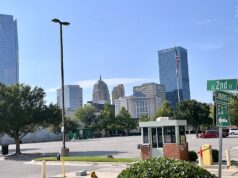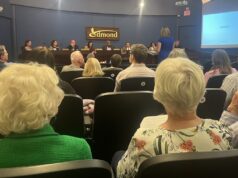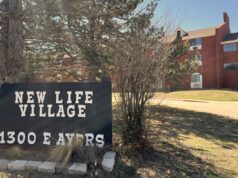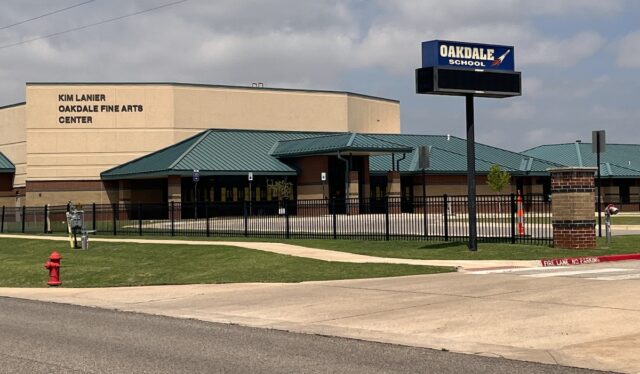

(Update: The OKC City Council voted to deny PUD-1930 by a 3-3 vote Tuesday, May 9. OKC Mayor David Holt and Councilman Mark Stonecipher recused from the item. Councilman Todd Stone was absent from the meeting. As the item needed seven votes to be approved, the vote was already defeated, in essence. The article below remains in its original form. A prior version of this editor’s note incorrectly referenced who was excused.)
Parents within the Oakdale Public School District in northeast Oklahoma City fear that a 655-home development proposed in the heart of the district’s boundaries will overcrowd classrooms, clearcut hundreds of trees and harm the area’s aquifer.
Established in 1908, Oakdale is a pre-K through eighth grade school district located in northeast Oklahoma City along the Interstate-35 corridor and abutting the city of Edmond. The district’s boundaries encompass nine square miles, and 57 certified teachers currently serve 722 students, according to district data.
Development of the proposed neighborhood, Georgetown Hills, would require site grading and clearcutting of all trees outside of the flood plain, which makes up about 40 acres of the 200-acre property located north of Britton Road and east of Sooner Road. Ideal Homes is proposing denser lot sizes than Oakdale’s surrounding neighborhoods, which are characterized by the Cross Timbers forests.
Oakdale residents opposing the development are asking for Ideal Homes to follow OKC’s comprehensive plan more closely. OKC’s development plan asks developers in the city to “preserve rural character and natural resources.”
“We recognize and understand that this property is going to be developed for residential purposes,” said J. Kelly Work, the attorney representing Oakdale residents against the housing proposal. “But what we are suggesting is that it needs to be done in a way that is more thoughtful of the environmentally sensitive area that would allow for the preservation of the existing upland forests and that would not result in the amount of impermeable surfaces that would be covering the site.”
But Ideal Homes representatives believe their proposal will help meet a need for lower-priced housing in and around the Oakdale school district. Oklahoma County Assessor data show that typical sales prices for homes surrounding the subject property are around $500,000, while some homes reach $1 million or higher.
“We are providing the opportunity for teachers, firemen, police (and) emergency service workers to live in an area that has a great school district,” said David Box, an attorney representing Ideal Homes. “We believe we have done everything that a prudent developer could do with this piece of property.”
The Oklahoma City Planning Commission voted 6-1 on Feb. 23 to rezone the subject property from an AA agricultural district to the PUD (Planned Unit Development) allowing for 655 lots. The chairman of the commission, Camal Pennington, voted against the rezoning application, while Janis Powers and Rusty LaForge abstained.
At 8:30 a.m. Tuesday, May 9, the same rezoning application for the Oakdale development is scheduled to go before the OKC City Council.
‘We’re going to have to build’
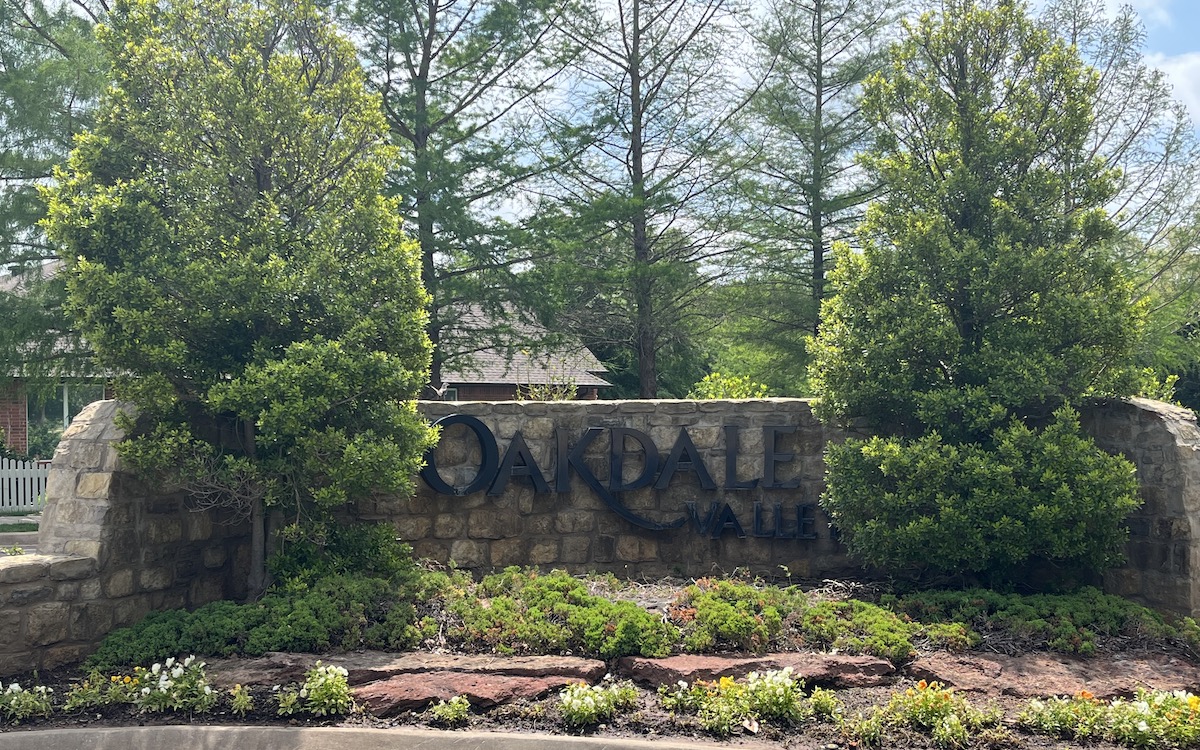
Nick Gray, an Oakdale resident with one child in the school district and a daughter who will be eligible for pre-K in less than two years, said Oakdale parents expect the property to be developed for residential use because it is so close to I-35. However, he wants it to be reasonable considering the size of the school.
“No one out here is scared of growth,” said Gray, who works in commercial real estate. “I’d just like to see something less dense there, so it’s not that immediate of an impact on the school.”
The district, which could see as much as 50 percent enrollment growth if the housing development is approved, currently has three kindergarten classes and has implemented a lottery program for enrollment in pre-K, something Gray attributes to ongoing residential growth on either side of I-35.
“If our daughter wants to go to Oakdale for pre-K and we don’t get the lottery, even though we live next to the school, we might not be even be able to get her in there because they just have such limited space,” Gray said.
Oakdale Public School Superintendent Carl Johnson said the district would welcome any students brought by this development, but that parents and district leaders need to be prepared for the potential influx. Johnson is new to district, currently working there part-time after being named superintendent in March. He is still serving as the full-time superintendent at neighboring Jones Public Schools. He will begin his full-time tenure at Oakdale on July 1.
“We are public educators. If a family is fortunate enough to be able to live in the Oakdale district, they are going to receive one of the best educations in the state,” Johnson said. “But, over the course of five years, if you bring in another few hundred students — something to that effect — yeah, we’re going to have to do some construction. We’re going to have to build. We don’t have empty classrooms sitting around, but again, that’s public education.”
Currently, Oakdale’s one school site enjoys smaller class sizes than its neighboring districts. Oakdale has about 13 students in each class, while EPS averages about 16 students and OKCPS averages about 17 students per class, according to district data.
Owing to the above-average revenue it receives from property taxes on the area’s affluent homes and industrial developments, Oakdale is one of about 45 public school districts considered “off” of the state’s per-pupil equalization funding formula. While that designation signals a financially strong district, it can pose complications when the Oklahoma Legislature sets education funding priorities, such as this year when the Senate and House have disagreed about whether to send all new appropriations for teacher pay through the formula.
Johnson said the majority of students who graduate from Oakdale Public School typically attend Edmond Public Schools for high school, while others head to OKCPS or Jones High School.
Follow @NonDocMedia on:
‘Our position has been misrepresented’
In an effort to help Oakdale Public School potentially expand, Ideal Homes’ current proposal reserves 20 acres on the southwest corner of the property at Sooner Road and Britton Road for an additional Oakdale elementary school, including five acres that would be donated.
However, the other 15 acres would need to be purchased by the district at a cost that is currently unknown. Johnson said he asked the developer what the cost might be, but he said he was not given a quote.
“They wouldn’t tell me. They cited the other developmental costs that need to be factored in,” Johnson said. “Honestly, that worries me. I would think that number would be ready, because we’ve got to plan for that. I didn’t feel like there was a lot of cooperation on making sure the school is in a position to take ownership of any land.”
In Box’s introduction to the OKC Planning Commission in February, he said the majority of Oakdale residents’ concerns revolve around the school and the development’s impact on its expansion. In initial discussions with the school and its previous superintendent, Box said the PUD included space for retail on the corner of Sooner Road and Britton Road. But Box said the district’s leadership did not want it.
“The school told us they didn’t want the commercial (development). They have so much bonding capacity and so much money based on what exists on I-35 with all the large-scale warehouses, that their ad valorem base is exceptionally high,” Box said.
Box said Ideal Homes then proposed a PUD with five acres reserved for the eventual construction of a new school.
“They said, ‘This is great, we love this idea. Five acres is not enough. We believe our minimum requirement is 15 acres,'” Box said.
He said Oakdale officials sent a letter Feb. 15 requesting the reservation of 20 acres for a school site.
Jason Midkiff, who served as the interim superintendent of the Oakdale School District at the time, told the OKC Planning Commission in February that the district’s stance on the rezoning application had been “misrepresented” by Ideal Homes.
“The board has concerns about the new development being proposed and its impact on the school,” Midkiff said.
Midkiff said the Feb. 15 letter intended to show the district is open to discussing the PUD with the developer and finding ways to protect the schools, but they have yet to come to an agreement.
“We feel that it is disingenuous to imply the board is supportive or excited about the development. The developer took preliminary discussions with Oakdale’s former superintendent and put them into the proposed PUD,” Midkiff said Feb. 23. “The developer has never discussed the PUD with the board, never came to any of our board meetings and never negotiated with the board about any kind of official proposal about including a school in the PUD.”
Lot sizes, density become center of disagreement

Box argued to the OKC Planning Commission that Ideal Homes has made concessions to Oakdale residents throughout negotiations, particularly regarding the property’s density — 3.35 dwelling units per acre. On land designated for “urban: low intensity” use, four to eight dwelling units is the target density for single family homes in the OKC comprehensive plan.
“When we first filed the PUD, we had a maximum density allowed of 3.5 units per acre — below the target density range,” Box said. “With our most current update, we are actually at 3.35, so we have continued to go down even though where we started was below the target density range.”
Work, the attorney representing existing Oakdale residents who oppose the PUD, pointed out that the four to eight unit-per-acre target density is qualified upon whether the project is adjacent to rural densities or preserving environmentally sensitive areas. If the project qualifies by either provision, the project can be allowed to decrease to one unit per acre, Work said.
“As noted in the staff report, this subject property is adjacent to rural densities. It also has a number of environmentally sensitive areas,” Work said of the Garber-Wellington aquifer and Cross Timbers forests.
Georgetown Hills’ proposed density is much higher than its surrounding neighborhoods. Oakdale Valley, a neighborhood adjacent to the north of the subject property, averages 11,000 to 12,000-square-foot lot sizes. Autumn Park, located east of the subject property, has a minimum lot size of 30,000 square feet. Other surrounding subdivisions, like Oakdale Meadows and Casa Bella, have minimum lot sizes set at one acre (or 43,560 square feet).
The proposed Georgetown Hills neighborhood would average minimum lot sizes of 6,500 square feet. However, 499 of the 655 single-family lots are currently proposed to be 5,750 square feet. If the property were zoned for an R-1 single family residential district, the minimum lot size requirement would be set at 6,000 square feet.
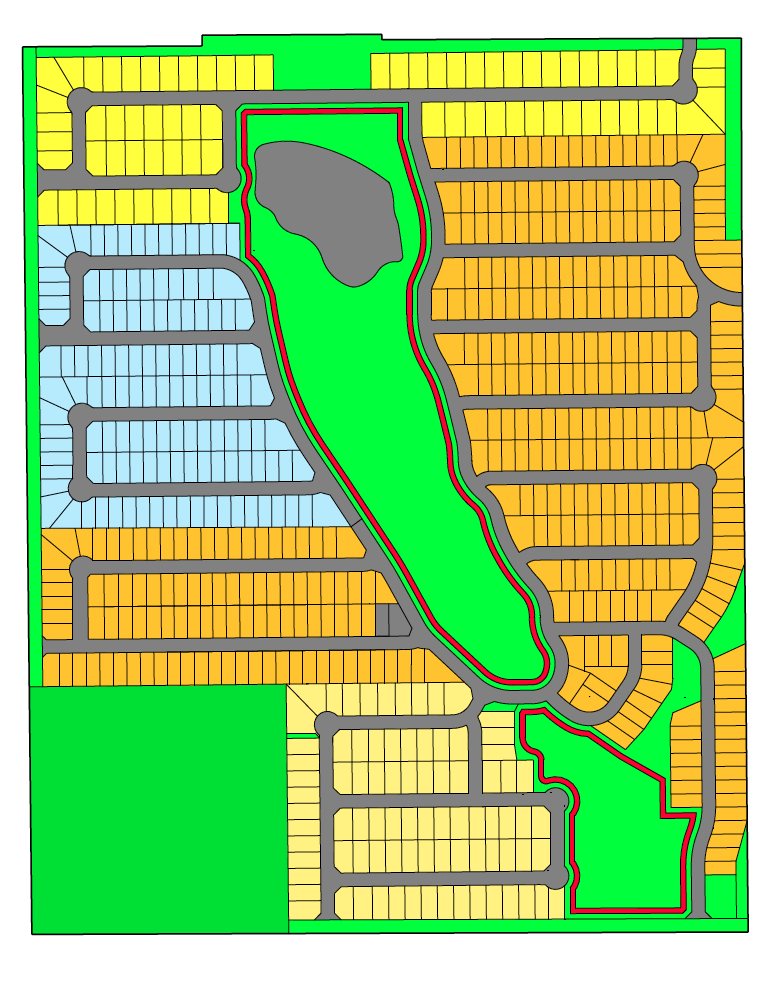
As shown above, the proposed Georgetown Hills PUD contains:
- 373 lots at 50 feet by 115 feet (orange lots)
- 83 lots at 60 feet by 120 feet (pale yellow lots on south side)
- 73 lots at 70 feet by 130 feet (yellow lots on north side)
- 126 active adult lots at 50 feet by 115 feet (blue lots)
- 20 acres on the lower left corner for an additional Oakdale school, still subject to an agreement between Oakdale and the developer (green box)
- About 40 acres of flood plain, which would remain common area (within red lines).
Work said that many of his clients rely on private water wells for their water and that the city’s comprehensive plan designates the Garber-Wellington aquifer in the Oakdale area as “vulnerable to depletion.” Work said his clients fear Georgetown Hills’ density could harm the aquifer further.
Tim Johnson, president of Johnson & Associates, serves as the project’s engineer. He said Georgetown Hills will be tied to OKC water and sewer lines and that no wells will be drilled on the property. Additionally, Johnson said the 200-acre property has a “bowl” shape that aids funneling water into a lake at the center of the floodplain — helping recharge the aquifer.
Later during the Feb. 23 meeting, a City of OKC staff member said the property has available water and sewer capacity to support the development.

Pennington: ‘Continuing to address the density is a good idea’
With the cost of connecting the Oakdale property to city water and sewer, Ward 1 OKC Planning Commission member Nate Clair said he thinks the developer needs density to make up those expenses.
“I would love to see five-acre lots or even two-and-a-half acre lots. I suspect — and we’re not privy to this information — I suspect because of land costs these days, those numbers just don’t pencil,” said Clair, who voted in favor of the rezoning. “All this investment has been made in public water and sewer in the area, that needs density to recoup those costs and those taxpayer investments.”
Dan Govin, Ward 6 OKC Planning Commission member, said he felt that residents’ concerns had been adequately addressed through Ideal Homes’ concessions. Govin voted in favor of the rezoning.
Commission Chairman, Camal Pennington, cast the lone vote against the rezoning application and said he believes the conversations between the developer and the residents have been “sincere,” but that density of the project remains a concern.
“I know that regardless of whether we recommend denial or whether we recommend supporting this application, it’s going to city council,” Pennington said. “I think in many ways, some of the things that city staff have said helps, but I think continuing to address the density is a good idea.”









